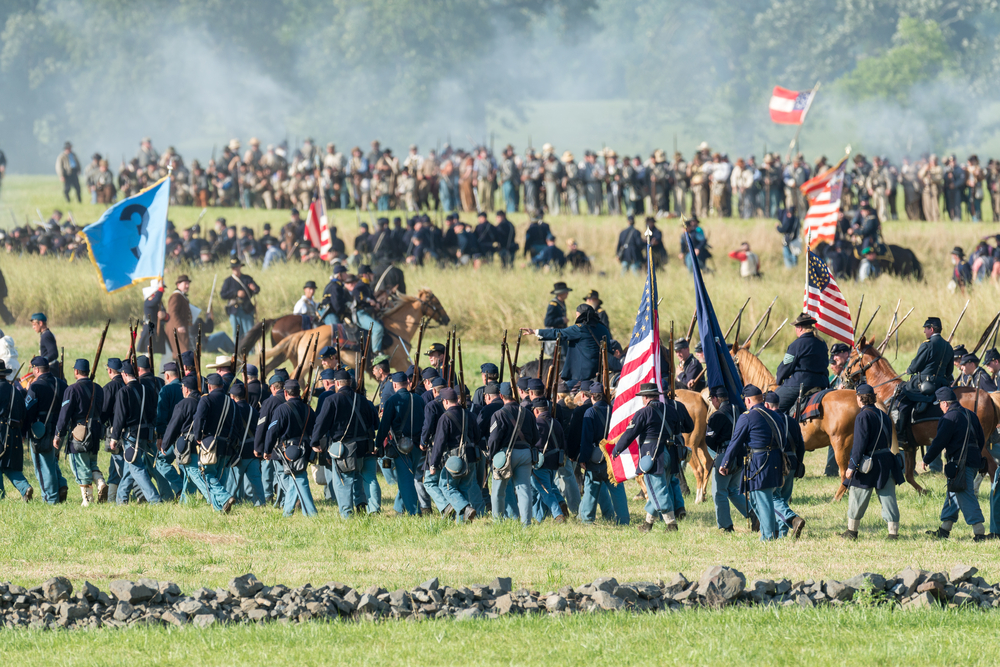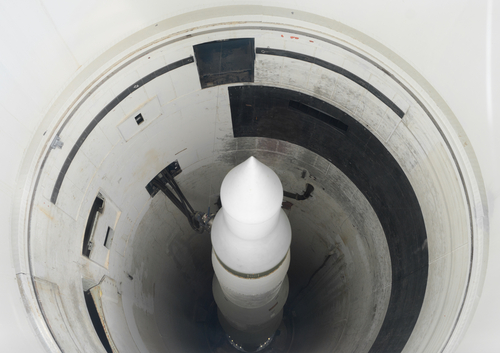This article navigates through the annals of history to spotlight 20 significant events that unfolded on January 31st, arranged in chronological order.
Each event encapsulates a moment of profound impact across a wide spectrum of human activity — from groundbreaking scientific achievements and pivotal geopolitical shifts to cultural milestones and the darker facets of conflict and disaster.
The journey begins in the 4th century with the ascension of Pope Silvester I and traverses through centuries to touch upon moments such as the dramatic use of poison gas in WWI, the birth of the hydrogen bomb amidst Cold War tensions, the space race’s leaps, and culminates in the 21st century with the United Kingdom’s formal departure from the European Union.
Through exploring these events, we gain insight into the forces that have shaped our world, reflecting on the complexity, diversity, and dynamism of human history.
January 31st Events in History
314 – Silvester I begins his reign as Pope
On January 31, 314, Silvester I became the 33rd Pope of the Catholic Church, a position he held until his death in December 335.
His papacy occurred during the reign of Emperor Constantine the Great, a pivotal time in the history of Christianity. Constantine the Great is known for embracing Christianity and for the Edict of Milan in 313, which proclaimed religious tolerance for Christianity within the Roman Empire.
Also Read: January 30 – On this Day in History
Pope Silvester I is traditionally credited with advising Constantine and playing a significant role in the Council of Nicaea in 325, although his actual involvement is debated.
The council was critical for the establishment of foundational Christian doctrines. He is venerated as a saint in the Catholic Church, with his feast day celebrated on December 31.

1606 – Gunpowder Plot: Guy Fawkes is executed for plotting against Parliament and King James
Guy Fawkes, a member of the Gunpowder Plot, was executed on January 31, 1606. The Gunpowder Plot was a failed assassination attempt against King James I of England and VI of Scotland by a group of provincial English Catholics led by Robert Catesby.
The plan was to blow up the House of Lords during the State Opening of Parliament on November 5, 1605, aiming to kill the king, his family, and much of the Protestant aristocracy in one fell swoop. Guy Fawkes was in charge of the explosives.
Also Read: February 1st Events in History
The plot was foiled after authorities received an anonymous tip. Following his capture, Fawkes was tortured and eventually confessed. He was condemned to be hanged, drawn, and quartered, a common punishment for traitors.
1747 – The first venereal diseases clinic opens at London Lock Hospital
On January 31, 1747, the London Lock Hospital opened, marking the establishment of the first clinic specializing in the treatment of venereal diseases. The hospital was founded by William Bromfield, a renowned surgeon of the time. It was initially located in Grosvenor Place, Hyde Park.
This institution was significant because it represented one of the earliest attempts to provide specialized treatment for sexually transmitted infections (STIs), which were widespread and a major public health issue in the 18th century.
The opening of this clinic highlighted the growing awareness and need for dedicated healthcare facilities to address specific diseases, contributing to the evolution of modern medical specialties.
1801 – John Marshall is appointed the Chief Justice of the United States
On January 31, 1801, John Marshall was appointed as the fourth Chief Justice of the United States Supreme Court by President John Adams, serving until his death in 1835.
His tenure is one of the most consequential in the history of the U.S. Supreme Court, as Marshall played a pivotal role in establishing the judiciary as a co-equal branch of government alongside the executive and legislative branches.
He is best known for his decision in Marbury v. Madison (1803), which established the principle of judicial review, giving the Supreme Court the power to declare laws unconstitutional. Marshall’s leadership and decisions helped lay the foundation for American constitutional law and greatly expanded the judiciary’s influence.
1865 – American Civil War: The United States Congress passes the Thirteenth Amendment to the United States Constitution, abolishing slavery
On January 31, 1865, the U.S. Congress passed the Thirteenth Amendment, marking a monumental step in the fight against slavery. This amendment officially abolished slavery and involuntary servitude, except as punishment for a crime, in the United States.
The passage of the Thirteenth Amendment was a culmination of years of abolitionist efforts and was significantly influenced by the outcomes and ideologies emerging from the American Civil War.
The amendment was a crucial victory for the Union and a key policy of President Abraham Lincoln’s administration. It was ratified by the required number of states later that year, on December 6, 1865, fundamentally altering the legal and social fabric of the United States by ensuring freedom for all persons.

1915 – World War I: Germany is the first to make large-scale use of poison gas in warfare in the Battle of Bolimów against Russia
The Battle of Bolimów, occurring on January 31, 1915, marked a sinister milestone in military history as Germany employed poison gas for the first time on a large scale.
The target was the Russian forces, and the weapon used was tear gas (xylyl bromide), launched in artillery shells. Unfortunately for the Germans, the cold weather caused the gas to freeze, rendering it ineffective.
This event preceded the more infamous large-scale chlorine gas attack at Ypres in Belgium later that year. The use of chemical weapons in WWI, starting from this point, opened a new and horrifying chapter in warfare, leading to future international bans on chemical weapons.
1917 – World War I: Germany announces that its U-boats will resume unrestricted submarine warfare
On January 31, 1917, Germany declared the resumption of unrestricted submarine warfare, a strategic military decision allowing its submarines to attack any ship, including civilian vessels, without warning within the war zone. This decision marked a pivotal turn in World War I, aiming to cut off Britain from its supplies and force it into submission.
However, this aggressive strategy significantly contributed to turning global opinion against Germany and played a crucial role in prompting the United States to enter the war on the side of the Allies in April 1917, after several American ships were sunk.
1929 – The Soviet Union exiles Leon Trotsky
Leon Trotsky, a key figure in the Bolshevik Revolution and an architect of the Soviet Red Army, was exiled from the Soviet Union on January 31, 1929, by Joseph Stalin, marking the culmination of a power struggle within the Communist Party.
Trotsky was initially a leader alongside Lenin but fell out of favor as Stalin rose to power. Trotsky’s ideas of permanent revolution and his criticisms of Stalin’s regime led to his expulsion.
After his exile, Trotsky lived in several countries, continuing to write and criticize Stalin’s policies until his assassination in Mexico in 1940 by a Soviet agent.
1943 – World War II: German Field Marshal Friedrich Paulus surrenders to the Soviets at Stalingrad, marking the end of the Battle of Stalingrad
The surrender of German Field Marshal Friedrich Paulus and his Sixth Army to Soviet forces on January 31, 1943, marked the conclusion of the Battle of Stalingrad, one of the deadliest and most pivotal battles of World War II.
The defeat was a major turning point in the war, halting the German advance into the Soviet Union and beginning the pushback that would eventually lead to the fall of Berlin and the end of the war in Europe.
The battle lasted for over five months, with significant losses on both sides, but the Soviet victory at Stalingrad was crucial for the Allies, significantly boosting Soviet morale and signaling a shift in the war’s momentum.
1945 – US Army private Eddie Slovik is executed for desertion, the first such execution of an American soldier since the Civil War
Private Eddie Slovik was executed by firing squad on January 31, 1945, becoming the only American soldier to be executed for desertion since the Civil War. Slovik was conscripted into the army during World War II, and after deserting, he confessed in writing, believing he would receive a prison sentence.
Instead, he was court-martialed and sentenced to death in an effort to maintain discipline within the U.S. Army as the war in Europe was entering its final, critical stages.
Slovik’s execution remains a controversial chapter in military history, highlighting the harsh realities of war and the extreme measures taken to enforce discipline.

1950 – United States President Harry S. Truman announces a program to develop the hydrogen bomb
On January 31, 1950, amid the escalating Cold War tensions, President Harry S. Truman announced that the United States would develop the hydrogen bomb, a weapon significantly more powerful than the atomic bombs dropped on Japan during World War II.
This decision was influenced by the Soviet Union’s successful detonation of an atomic bomb in 1949, which ended the United States’ monopoly on nuclear weapons.
The development of the hydrogen bomb marked a significant escalation in the nuclear arms race, leading to a period of heightened global tension and the proliferation of increasingly destructive nuclear weapons capabilities.
1953 – The North Sea flood of 1953 kills thousands in the Netherlands and Britain
The North Sea flood of 1953 was one of the worst natural disasters of the 20th century in Europe, striking on the night of January 31. Caused by a severe European windstorm and high spring tides, the flood breached sea defenses in the Netherlands and the east coast of England.
In the Netherlands, over 1,800 people lost their lives, and around 47,000 homes were damaged or destroyed. In England, over 300 people died, and thousands were left homeless.
The disaster led to major changes in storm surge prediction and prevention, including the construction of the Delta Works in the Netherlands and improved flood defenses in the UK.
1958 – The first successful American satellite, Explorer 1, is launched into orbit
Explorer 1, launched on January 31, 1958, marked the United States’ entry into space, following the Soviet Union’s launch of Sputnik 1 and Sputnik 2 in 1957.
Explorer 1 was the first satellite launched by the United States and was instrumental in discovering the Van Allen radiation belts, zones of charged particles trapped by Earth’s magnetic field, which was a major scientific achievement.
The success of Explorer 1 represented a significant milestone in the space race, contributing to the establishment of NASA later that year and setting the stage for future U.S. space exploration.
1961 – Project Mercury: Mercury-Redstone 2 – Ham the Chimp travels into outer space
On January 31, 1961, as part of NASA’s Project Mercury, Ham the Chimp became the first hominid to travel into outer space, paving the way for human spaceflight. Ham’s mission, Mercury-Redstone 2, was a suborbital flight that tested the Mercury capsule’s life support systems and the ability to perform tasks during spaceflight.
Ham successfully performed the tasks he was trained for, demonstrating that tasks could be carried out in space. His mission was a critical step toward the first human spaceflight by the United States, achieved later that year with Alan Shepard’s flight.
Ham returned to Earth safely and lived the remainder of his life in zoos, contributing valuable data for the future of manned space exploration.
1968 – Vietnam War: Viet Cong attack the United States embassy in Saigon
In the early hours of January 31, 1968, during the Tet Offensive, Viet Cong guerrillas launched a surprise attack on the U.S. Embassy in Saigon, South Vietnam. This audacious assault was part of a larger series of attacks throughout South Vietnam, timed to coincide with the Tet holiday ceasefire. Although the embassy attackers were quickly neutralized, with all 19 guerrillas killed by U.S. forces, the attack shocked the American public and significantly eroded support for the war effort. The Tet Offensive, despite being a tactical defeat for the Viet Cong and North Vietnamese forces, marked a turning point in the Vietnam War, showcasing the tenacity of the enemy and leading to a shift in U.S. public opinion and policy.
1971 – Apollo 14: Astronauts Alan Shepard, Stuart Roosa, and Edgar Mitchell, in a lunar module, lift off for a mission to the Fra Mauro Highlands on the Moon
Apollo 14, which launched on January 31, 1971, was NASA’s third successful manned mission to the moon. Alan Shepard, Stuart Roosa, and Edgar Mitchell were the crew members on this mission.
Shepard and Mitchell spent more than 33 hours on the Moon, including two moonwalks to conduct various scientific experiments and collect samples, while Roosa orbited in the command module. Notably, Alan Shepard famously hit two golf balls on the lunar surface, showcasing a lighter moment during the mission.
Apollo 14’s successful completion represented a significant recovery and confidence boost following the near-disastrous Apollo 13 mission, contributing valuable scientific data to lunar research.
1982 – The first computer virus, called “Elk Cloner”, is written by 15-year-old Rich Skrenta
“Elk Cloner” is recognized as the first computer virus to spread in the wild, outside the environment in which it was created. Written by 15-year-old Rich Skrenta, it targeted Apple II computers, spreading via floppy disks.
When a computer booted from a disk infected with Elk Cloner, the virus would load itself into the computer’s memory and replicate onto any subsequent floppy disk used.
The virus became notorious for displaying a poem written by Skrenta after the 50th use of the infected disk. Elk Cloner’s creation marked the beginning of what would become a major area of concern in computing: cybersecurity and the ongoing battle against malicious software.
1990 – McDonald’s opens its first restaurant in Moscow, Russia
The opening of the first McDonald’s restaurant in Moscow on January 31, 1990, was a significant cultural event, symbolizing a moment of East-West convergence towards the end of the Cold War era.
Located in Pushkin Square, this McDonald’s was the world’s largest at the time and served over 30,000 customers on its opening day, reflecting the local population’s curiosity and enthusiasm for American fast food.
The event was emblematic of the broader economic and social reforms in the Soviet Union and the opening up of Russia to Western businesses, signaling a shift towards more market-oriented economic policies.
2000 – Alaska Airlines Flight 261 crashes into the Pacific Ocean, killing all 88 people on board
On January 31, 2000, Alaska Airlines Flight 261, a McDonnell Douglas MD-83 aircraft flying from Puerto Vallarta, Mexico to San Francisco and Seattle, crashed into the Pacific Ocean off the California coast.
All 88 people aboard were killed. The National Transportation Safety Board (NTSB) investigation determined that the crash was caused by a failure in the plane’s jackscrew assembly, a critical component of the aircraft’s horizontal stabilizer control system.
The tragedy led to increased scrutiny and changes in aircraft maintenance practices, particularly regarding the inspection and lubrication of the jackscrew assembly.
2020 – The United Kingdom formally withdraws from the European Union
The United Kingdom’s formal withdrawal from the European Union on January 31, 2020, marked the culmination of the Brexit process, which began with a 2016 referendum where a majority of British voters chose to leave the EU.
The departure ended over four decades of UK membership in the EU, bringing about significant political, economic, and legal changes. Brexit negotiations had focused on trade relations, the rights of UK and EU citizens, and the status of the border between Northern Ireland (part of the UK) and the Republic of Ireland (an EU member).
The withdrawal agreement included a transition period to allow for the adjustment to the new relationship between the UK and the EU.
